Bog plants: 15 moisture-loving plants for damp areas of your garden
Growing bog plants that will suit the wetter areas of your garden will always create an enchanting display in your plot
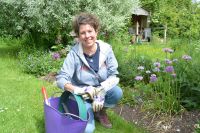

The range of bog plants that enjoy being near a wet area in the garden is exciting and extensive, and water features always add interest and tranquility to your plot.
Adding moisture-loving plants is known as ‘bog’ or ‘streamside’ planting and encompasses species fond of earth that is consistently damp, even in the height of summer. Also included within the moisture-loving group are the plants that suit ‘retentive’ conditions: borders and beds that conserve water well.
While the latter are relatively easy to create by adding organic matter such as compost to your flowerbed ideas, constructing a bog or pondside border can be more laborious and involved. Sometimes conditions are naturally easy, but in most cases the site must be investigated and altered before adding your bog plants.
Once in place, however, you are rewarded with a fabulous display of colorful plants, such as candelabra primulas and astilbes, that will be a joy for years to come.
15 bog plants that will thrive in wet areas
Our favorite bog plants are enchanting in a damp garden pond border, where they will produce lush, architectural foliage and brightly colored flowers.
1: Filipendula rubra ‘Venusta’ AGM
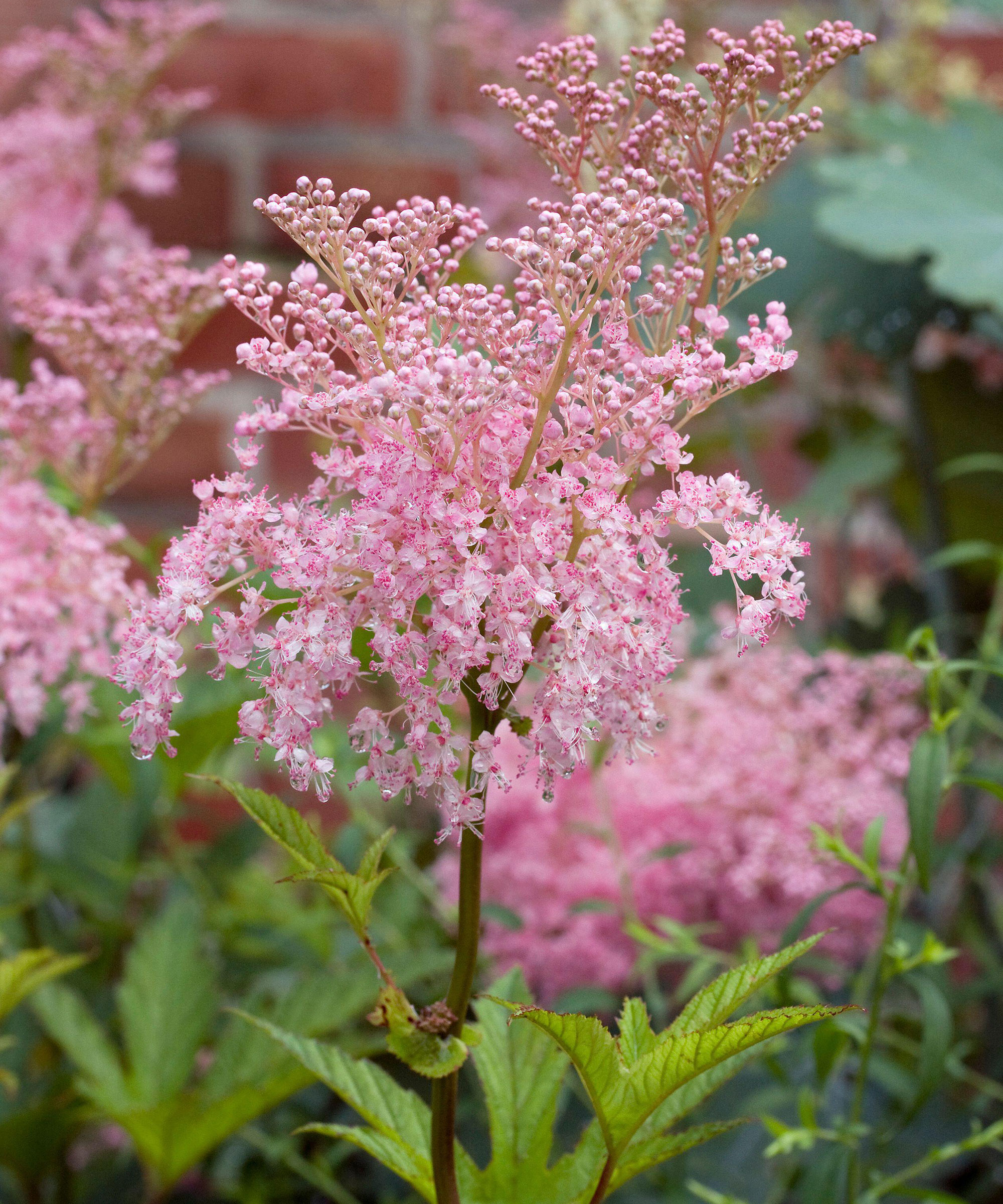
- Hardiness: USDA 3-8 (UK H5)
- Height: 6ft (1.8m)
Gorgeous fleecy clumps of soft-pink flowers adorn this tall meadowsweet in July and August, above palmate leaves; followed by attractive seedheads.
Grow this perennial in sun or semi-shade in a bog or retentive garden border. It spreads easily, but is easy to dig out if it starts to get out of control.
Perfect plant partners for these bog plants include butterfly-friendly Eupatorium, large-leaved Chinese rhubarb (Rheum), or lavender Veronicastrum virginicum ‘Fascination’.
2. Iris ensata ‘Rose Queen’ AGM
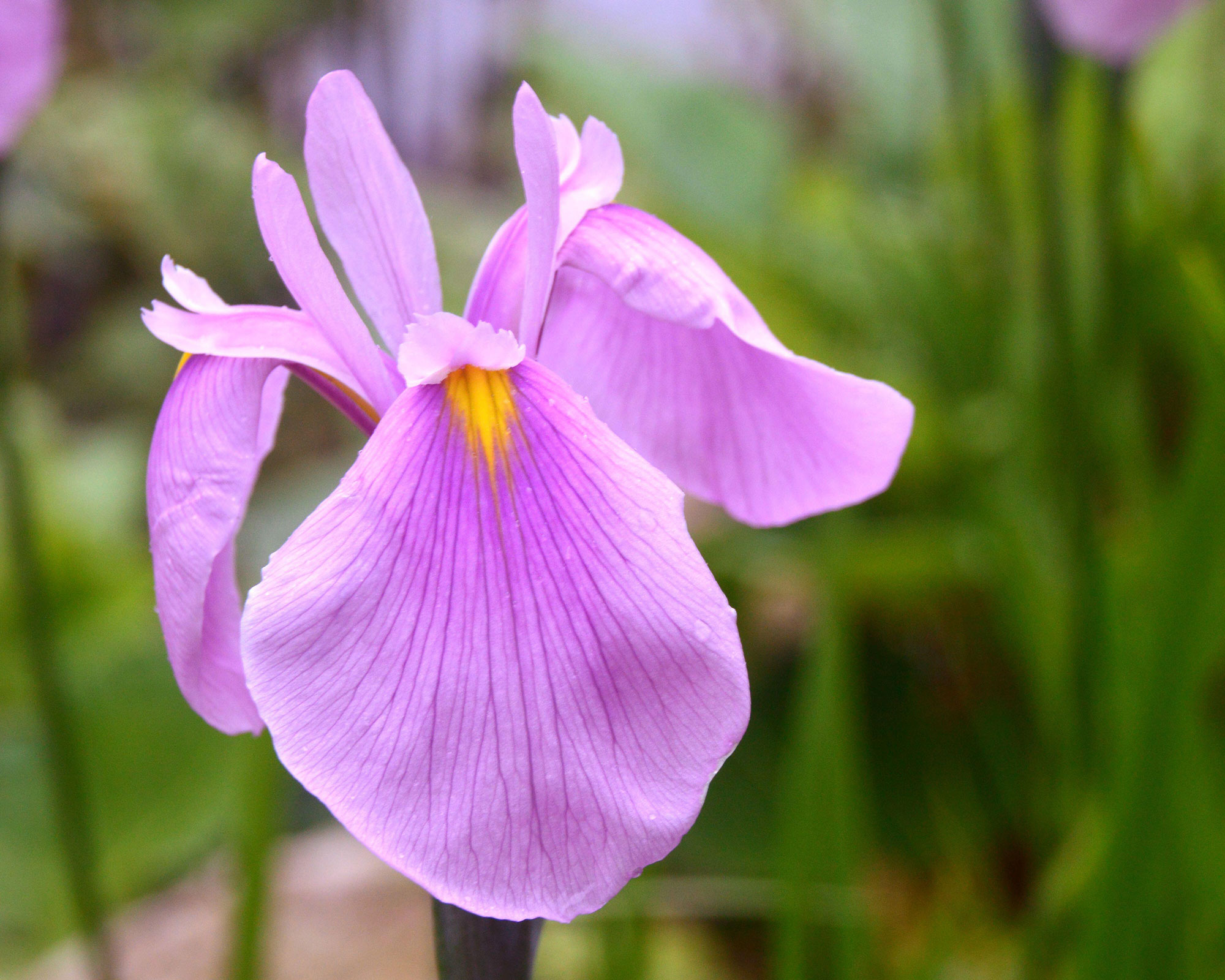
- Hardiness: USDA 4-9 (UK H6)
- Height: 2.5ft (75cm)
This is a beautiful pink Japanese iris that blooms in the height of summer (typically June and July), with gold and mauve-pink falls and slender foliage.
Ensatas love bog gardens with acid soil in sun or semi-shade, but drainage must be good because they loathe winter waterlogging.
For a striking effect, plant with other varieties of I. ensata – the display of regal purple, pink, and white flowers en masse is truly incredible.
3. Lythrum salicaria 'Blush' AGM
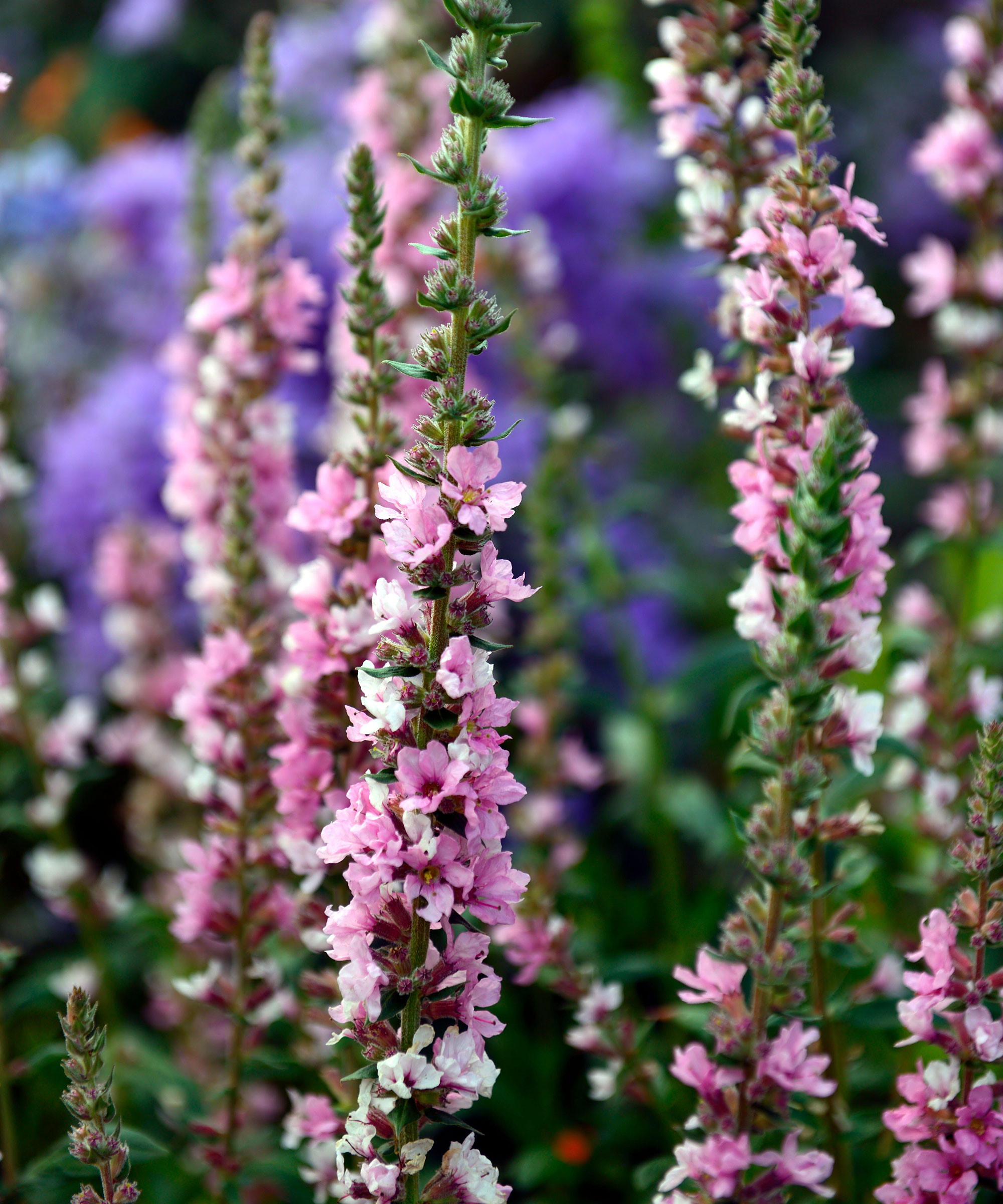
- Hardiness: USDA 4-9 (UK H7)
- Height: 3ft (90cm)
This pretty bee friendly plant displays candles of gentle-pink flowers from midsummer into autumn.
It will happily grow in a bog garden or a retentive border in full sun. Deadhead like a hawk to prevent its vigorous self-seeding, and do not grow in US states where it is invasive (such as Ohio).
Grow with other moisture-loving perennials, such as Persicaria, Sanguisorba, Lobelia, and Astilbe, making sure it is easily accessible for deadheading.
4. Lobelia cardinalis 'Queen Victoria' AGM
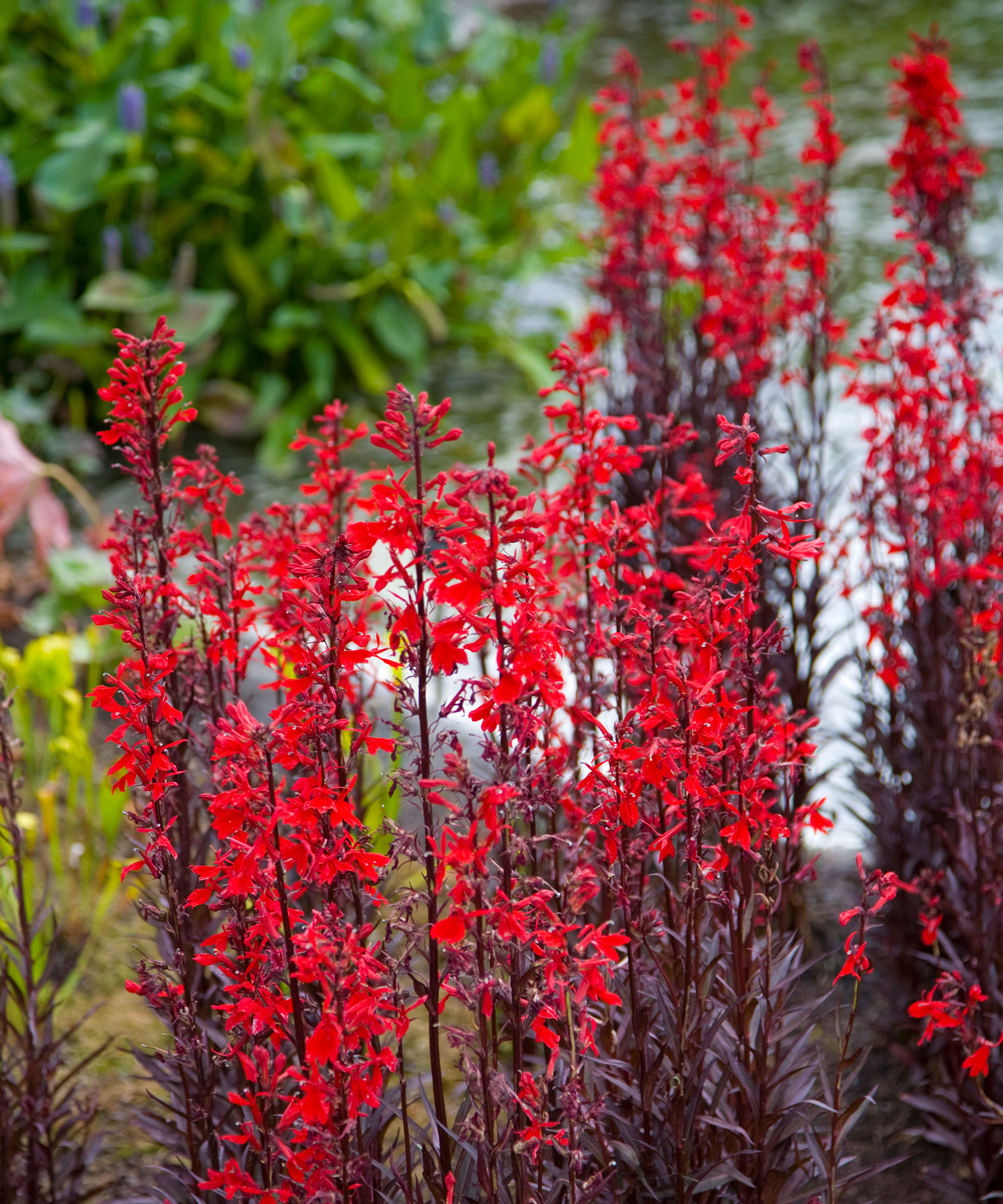
- Hardiness: USDA 4-9 (UK H3)
- Height: 3ft (90cm)
An eye-catching option for our list of bog plants, this features scarlet flowers above burgundy foliage in late summer and early fall.
L. cardinalis is native to the Americas, where it grows in swamps. Plant in a bog garden or retentive border and protect it by mulching it (straw is a good option) in winter.
Partner these bog plants with striking blues and purples, such as its sisters Lobelia siphilitica and L. x speciosa ‘Hadspen Purple’. Also good with deeper reds, such as Helenium ‘Moerheim Beauty’.
5. Primula japonica 'Miller's Crimson' AGM
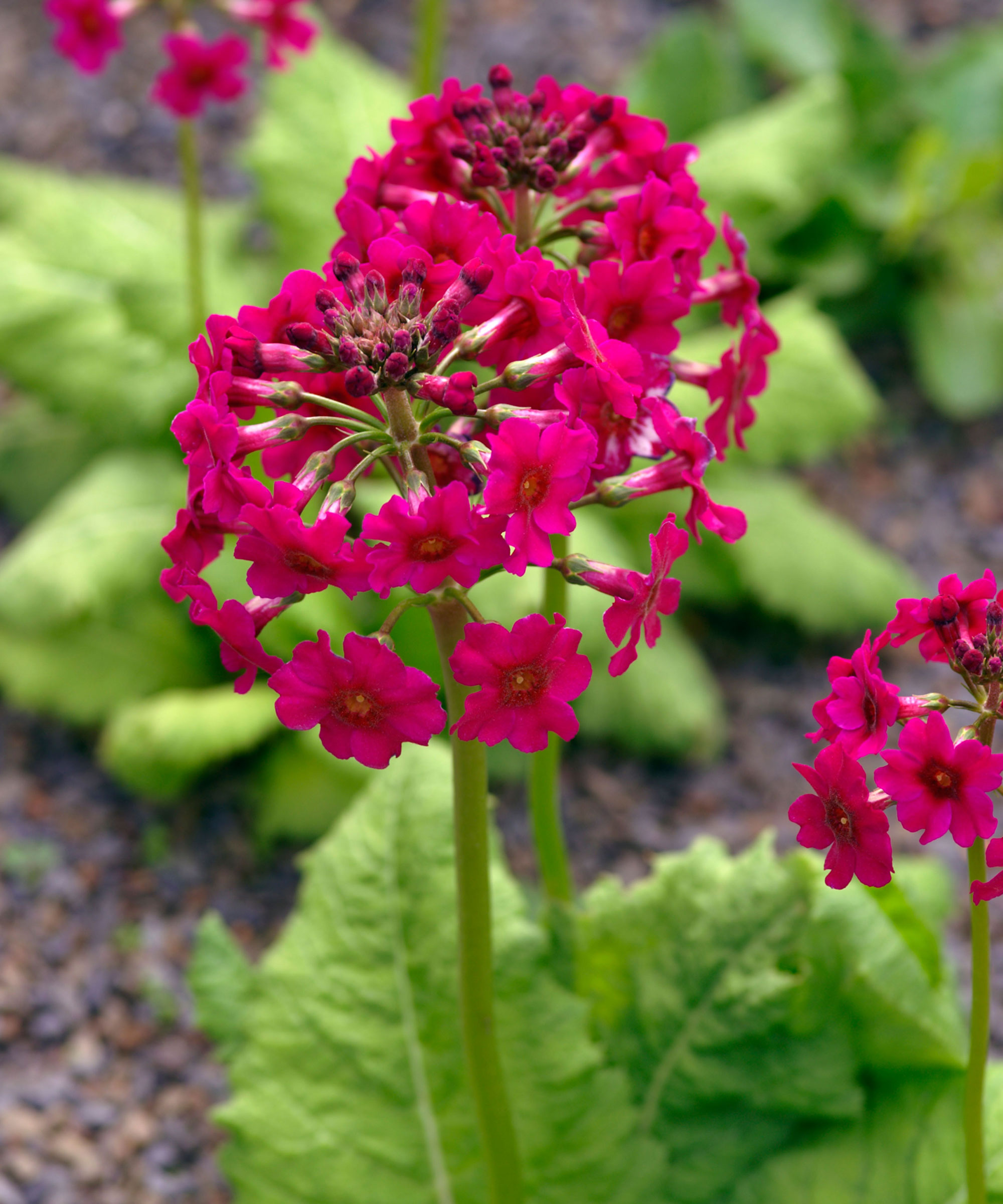
- Hardiness: USDA 5-9 (UK H6)
- Height: 2ft (60cm)
A bold candelabra primula with whorls of cerise-red flowers in late spring and early summer.
Intense sun can drain its color, so it is arguably best planted in semi-shade. It's one of the best perennials for a bog garden and given the right conditions, it will self-sow.
It looks breathtaking with the blue poppy (Meconopsis) in acid soil. Or for a blast of color, plant with other candelabra primulas (such as orange P. bulleyana and yellow P. prolifera).
6. Astilbe 'Fanal' AGM
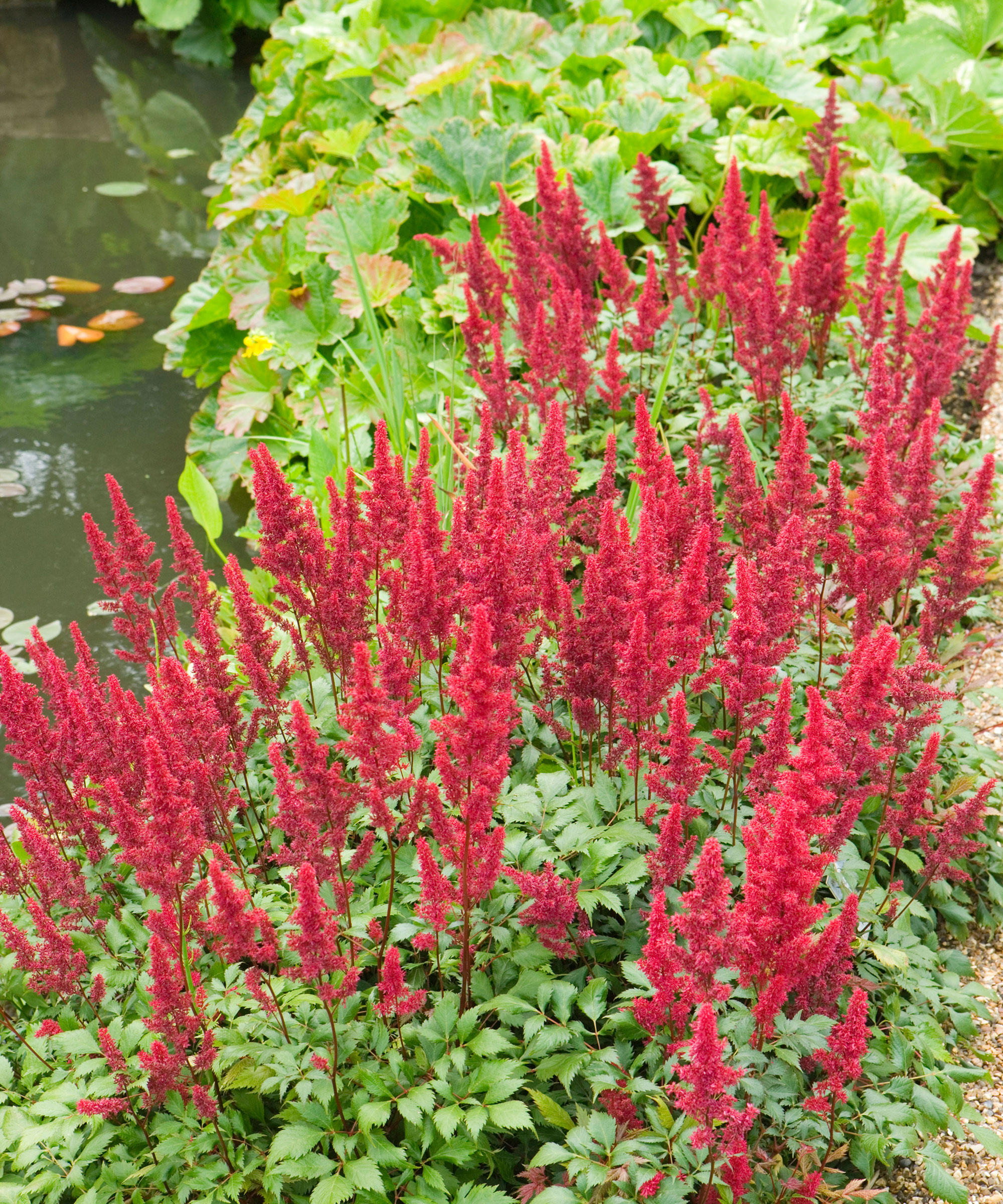
- Hardiness: USDA 3-8 (UK H7)
- Height: 2ft (60cm)
Plumes of rich cherry-red flowers adorn this false goatsbeard in early summer and then morph into attractive seedheads.
The serrated foliage emerges bronze, before maturing to green. Grow in a bog garden or retentive border in sun or semi-shade.
Grow near other reds or pinks, so that it doesn’t dominate. For instance, Persicaria amplexicaulis ‘Firetail’ and Lythrum salicaria ‘Feuerkerze’. It’s also striking with whites, such as Sanguisorba albiflora.
7. Lysimachia clethroides AGM

- Hardiness: USDA 3-8 (UK H6)
- Height: 3ft (90cm)
Gooseneck loosestrife has buddleja-like arching white flower panicles that are visited by bees and butterflies in the height of summer, making it a brilliant plant for pollinators. It also has grey-green leaves that take on fiery tints in autumn. Grow in a bog garden or retentive border in sun.
This works best in a large garden as it can become invasive, or you can restrict its growth by planting it in a pot.
Good planting partners include Raspberry Persicaria amplexicaulis or red Monarda ‘Gardenview Scarlet’.
8. Veratrum album AGM
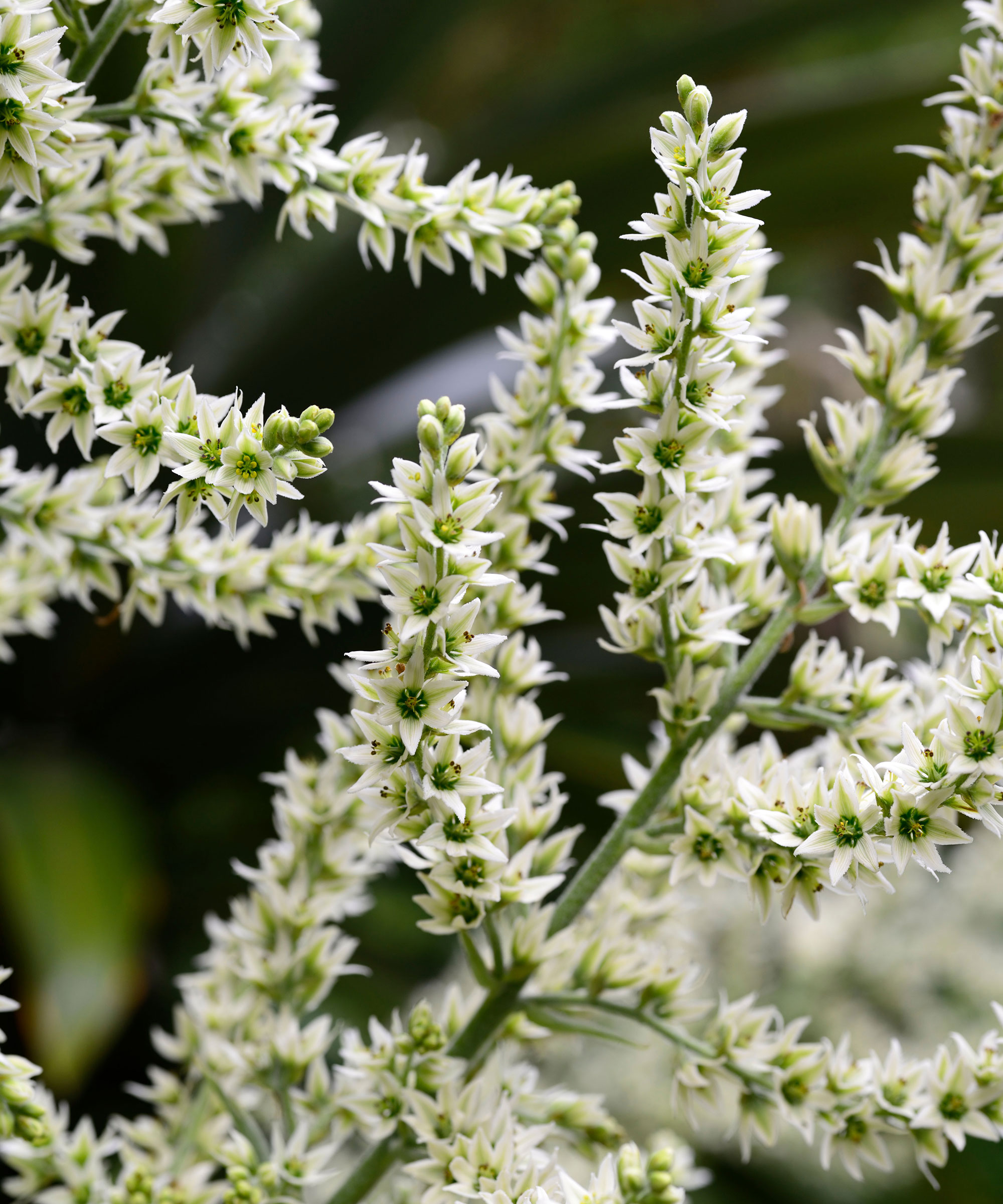
- Hardiness: USDA 4-8 (UK H7)
- Height: 5ft (1.5m)
In July and August, the white false hellebore produces statuesque, branching stems of ivory and green flowers, above attractive hosta-like leaves.
They can be expensive to buy because they take years to raise, so take care to protect them from slugs, in the rich, deep soil of a bog garden or retentive border, in sun or semi-shade. There are lots of tips on how to get rid of slugs in our dedicated guide if you do spot them attacking the plants.
Plant with the likes of hostas, rodgersia, and ferns for an attractive combination.
A final word of warning, do bear in mind that this bog plant is poisonous.
9. Zantedeschia aethiopica ‘Crowborough’ AGM
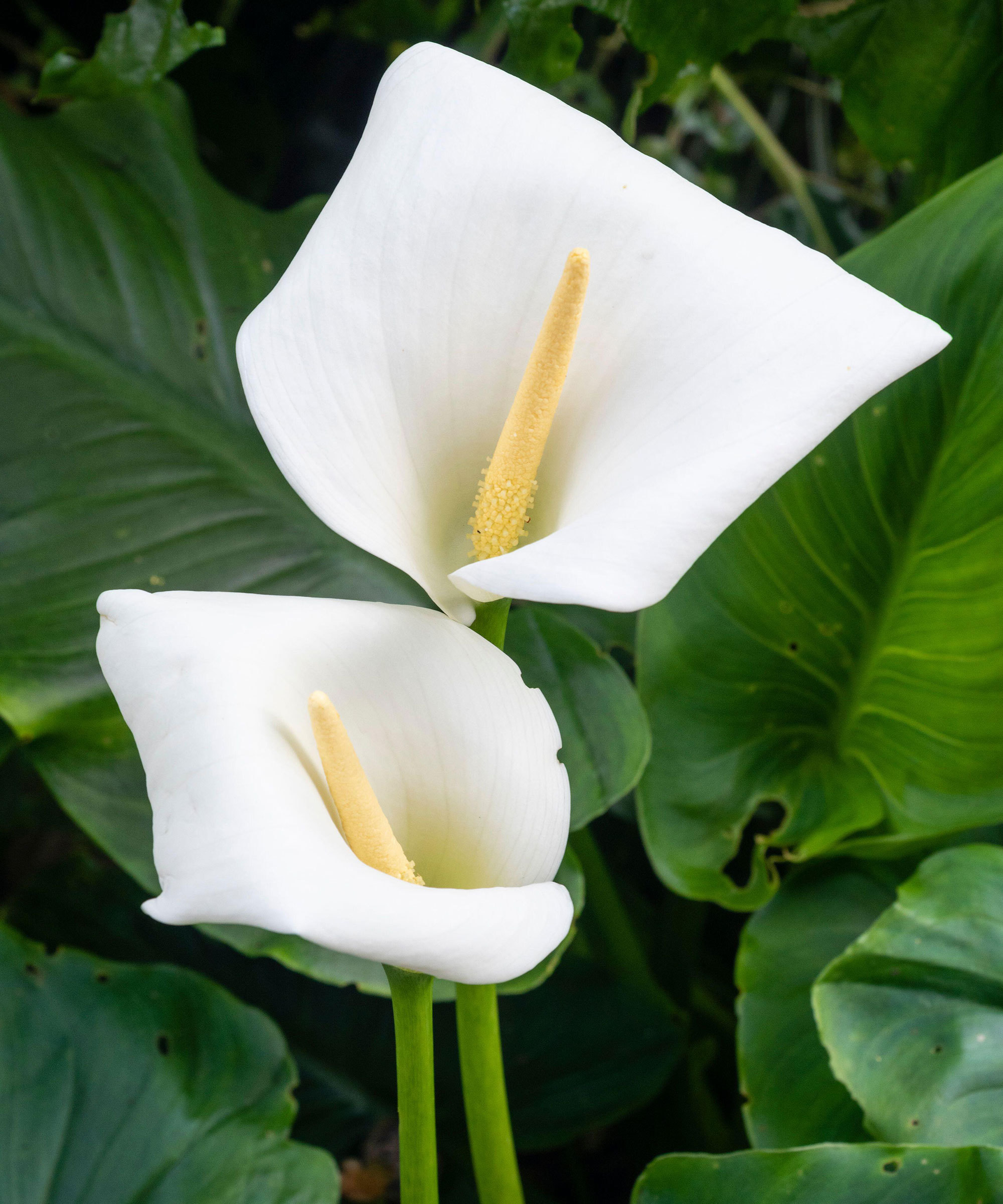
- Hardiness: USDA 8-10 (UK H4)
- Height: 3ft (90cm)
An elegant arum lily with white spathes above lush dark-green leaves, in early summer.
These perennials grow wild in streamsides in South Africa, so can be enjoyed in bog gardens or the margins of a pond, in sun or semi-shade. In warm climates the leaves are evergreen.
Good planting companions include water-loving irises, such as blackcurrant Siberian iris (Iris chrysographes).
10. Gunnera manicata
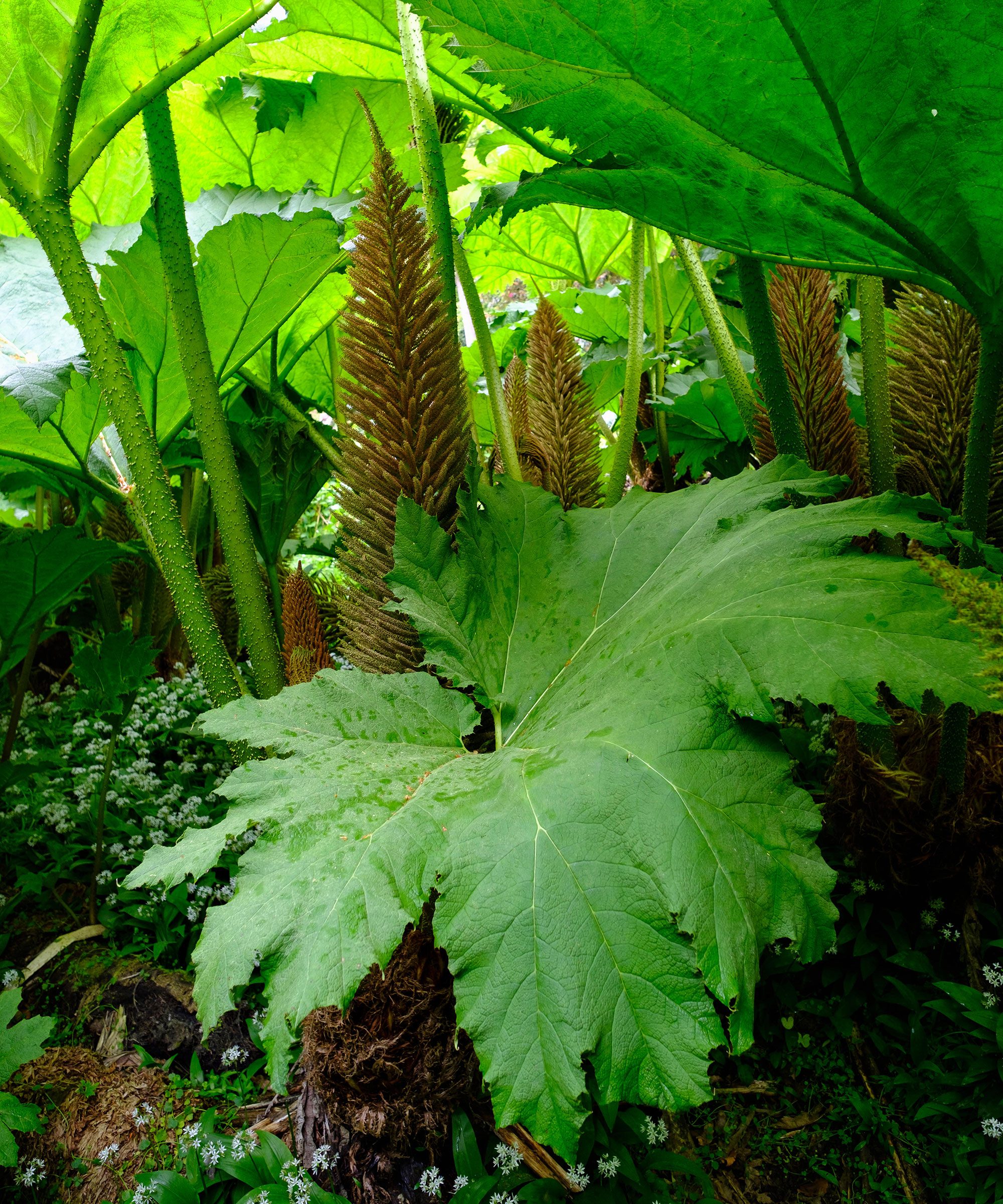
- Hardiness: USDA 7-10 (UK H5)
- Height: 6-10ft (2-3m)
Akin to growing a dinosaur, the giant rhubarb has enormous rough leaves on spiky stems that grow so tall in the right conditions, you can stand underneath them. Grow this epic perennial in a bog in sheltered semi-shade.
11. Rodgersia podophylla
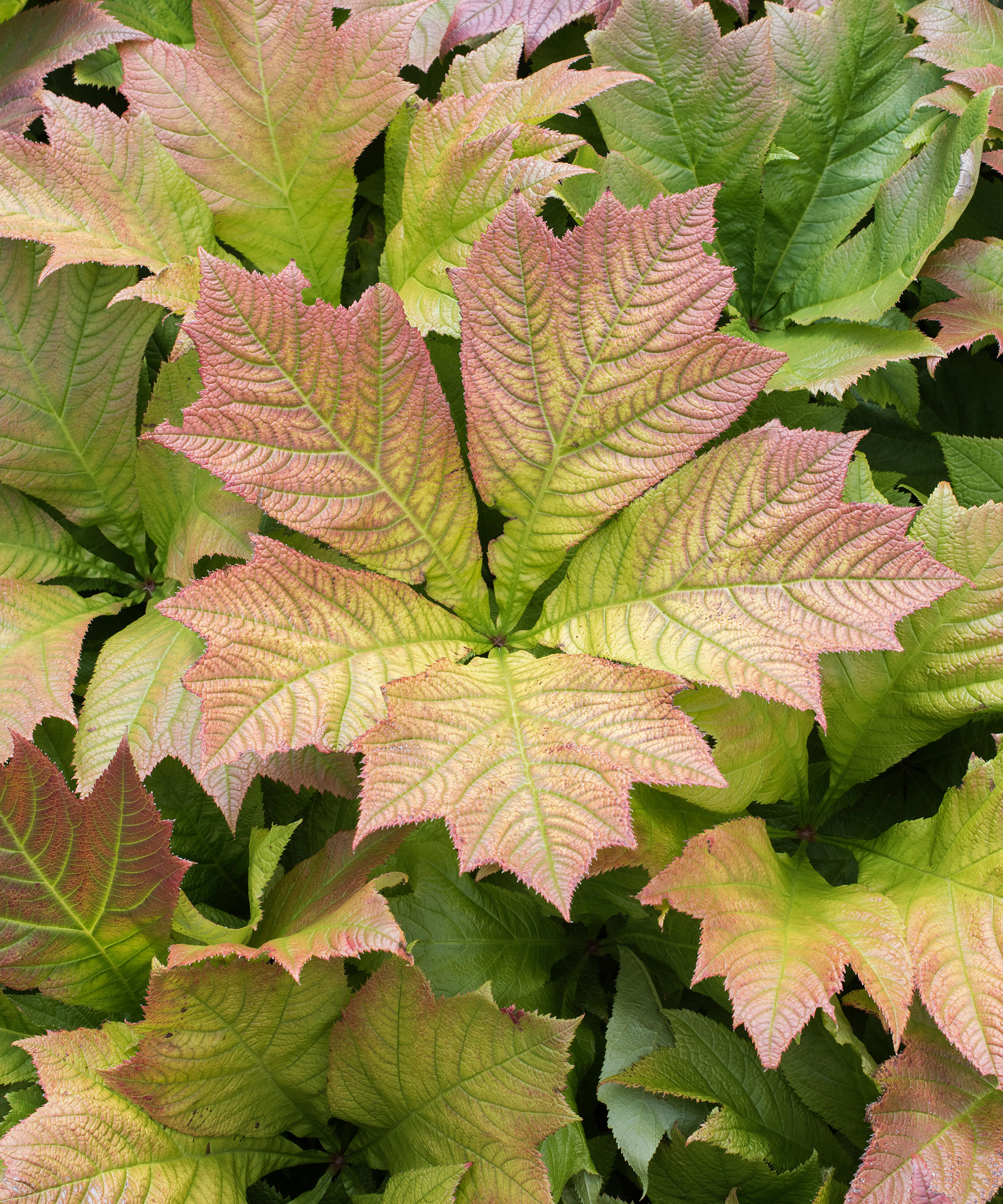
- Hardiness: USDA 5-8 (UK H6)
- Height: 4ft (1.2m)
Large palmate leaves that are bronze when young and then mature to green, eventually becoming copper-tinted in autumn.
It's an excellent perennial bog plant that will do well in sun or semi-shade, plus it works particularly well when paired with fleecy cream summer flowers.
12. Acorus gramineus ‘Ōgon’
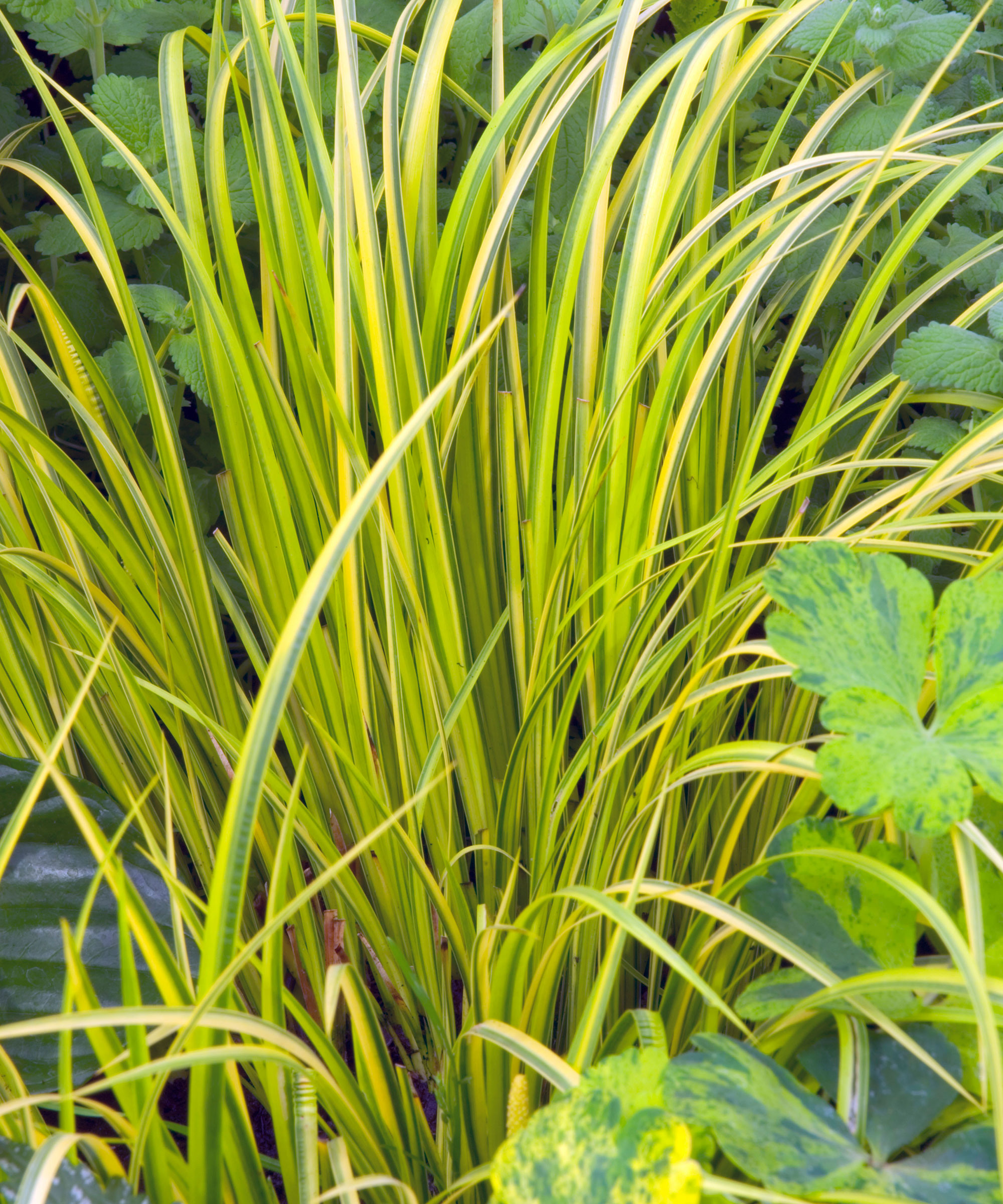
- Hardiness: USDA 6-9 (UK H6)
- Height: 1ft (30cm)
This slender sweet flag is a striped green and gold grass that forms arching mounds. Great as an evergreen ground-cover plant in a bog and can also be grown in pond margins, in sheltered semi-shade.
13. Euphorbia palustris AGM
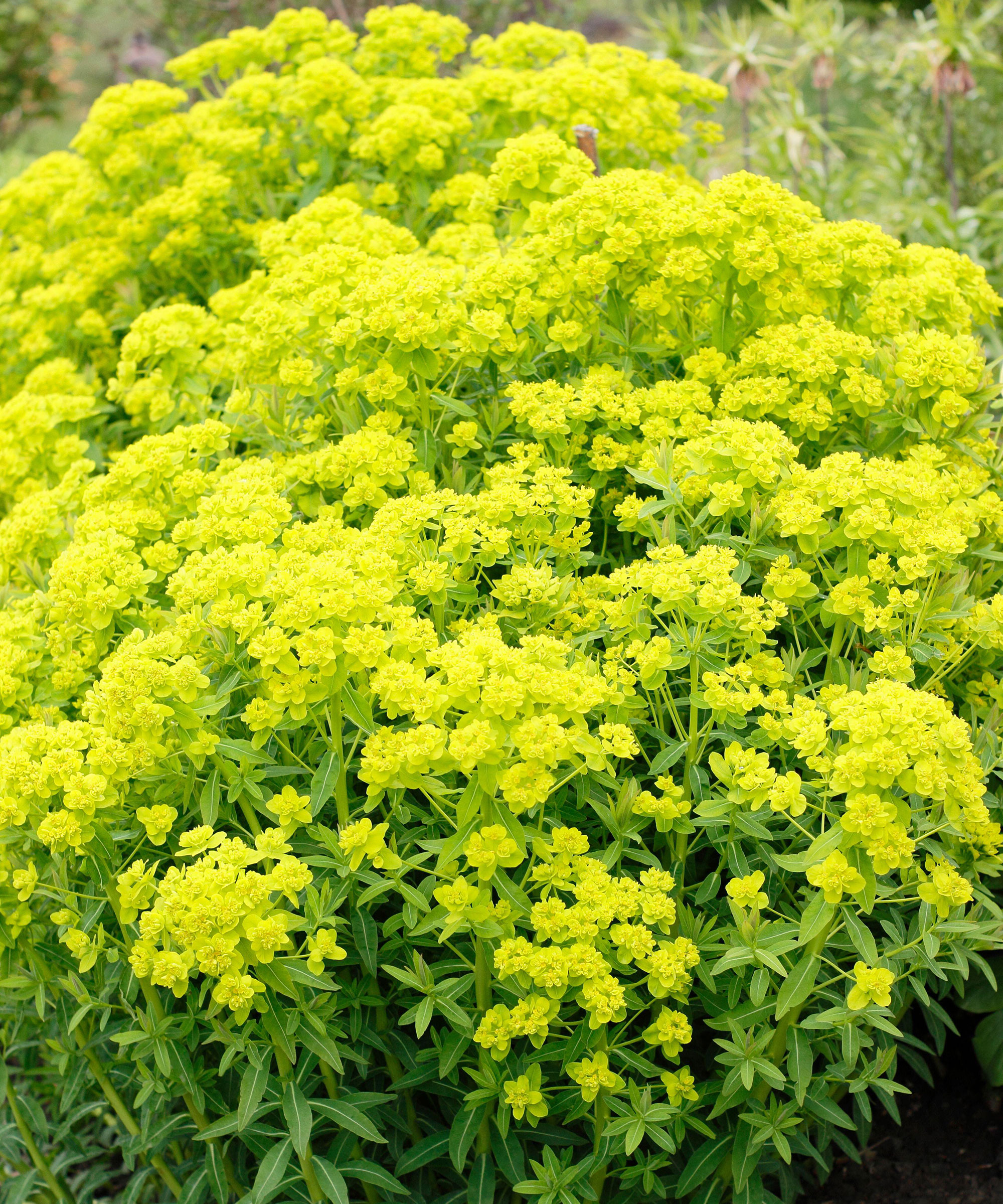
- Hardiness: USDA 5-10 (UK H7)
- Height: 3ft (90cm)
Marsh spurge produces lime-yellow flower bracts in May and June, as well as colorful autumn foliage.
It's suitable for planting in bog gardens or retentive borders in full sun. Do make sure that you wear gardening gloves when cutting this plant, as the sap irritates skin.
14. Primula bulleyana AGM
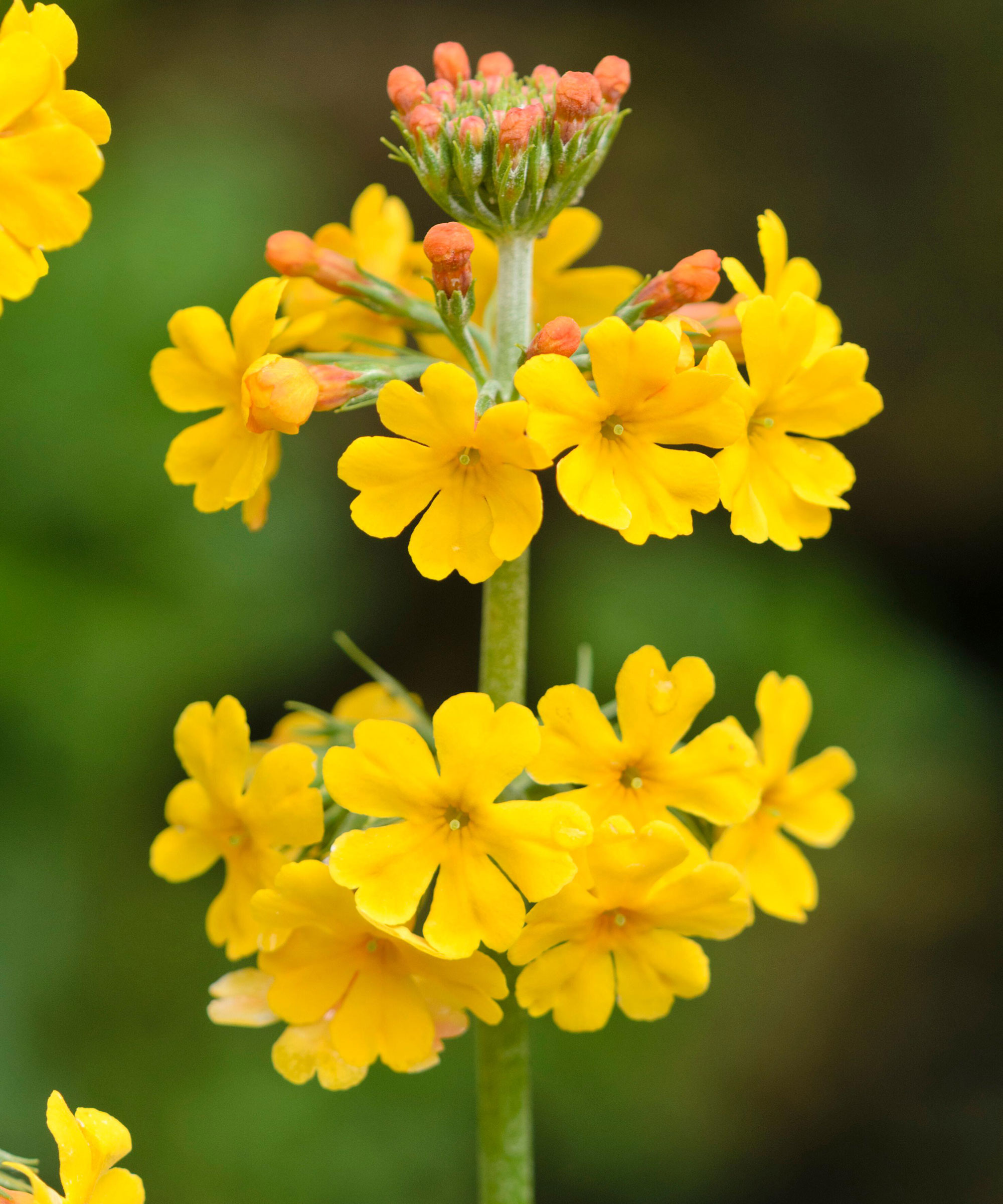
- Hardiness: USDA 5-8 (UK H7)
- Height: 2ft (60cm)
An excellent candelabra primula with whorls of golden-orange flowers from red buds in June.
Award-winning plantswoman Beth Chatto wrote of this plant, 'It is one of the easiest of bog primulas, provided you have continuously damp soil.'
15. Trollius chinensis ‘Golden Queen’ AGM
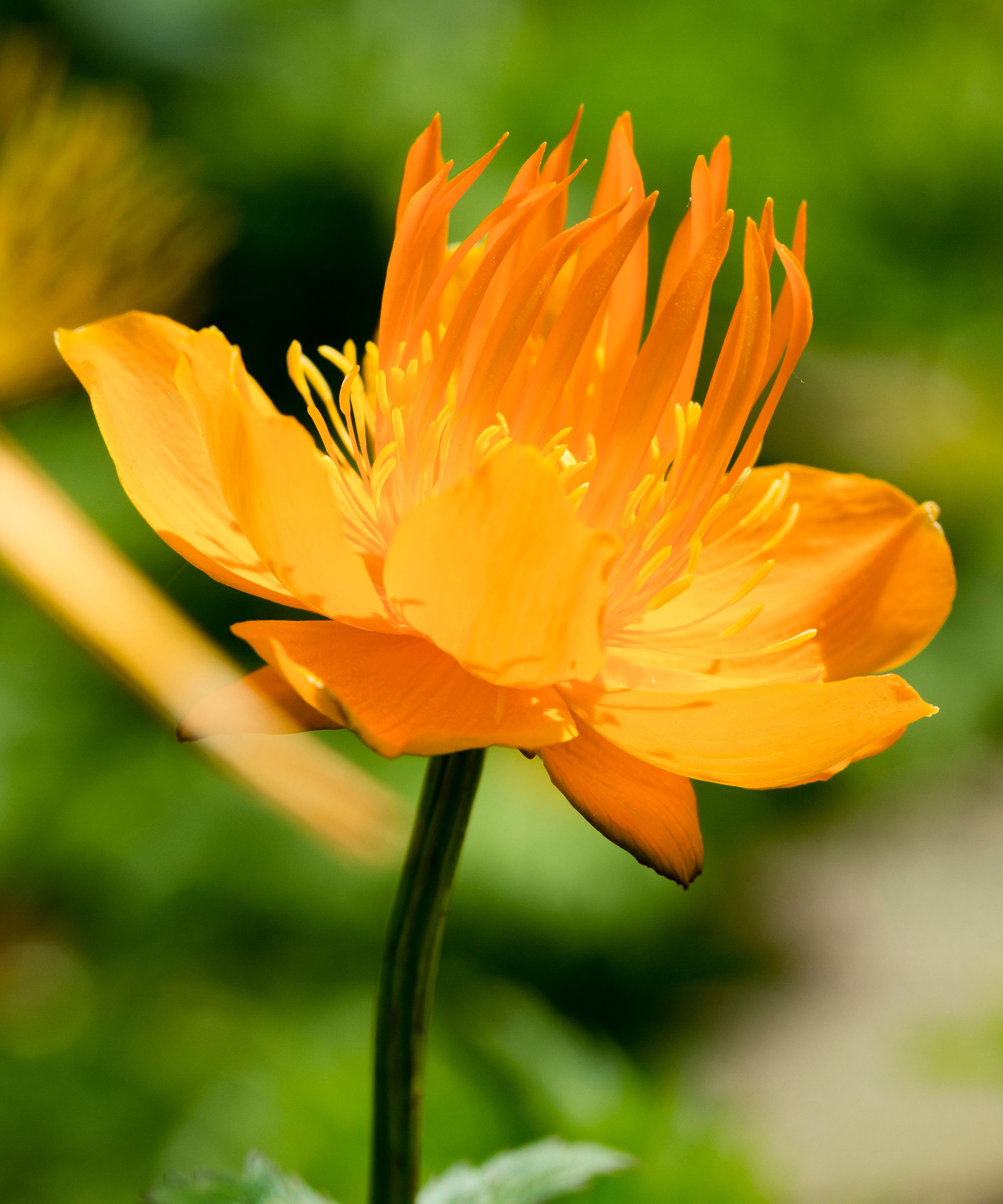
- Hardiness: USDA 3-6 (UK H7)
- Height: 3ft (90cm)
One of Beth Chatto's favorite bog plants, this globeflower has happy amber-orange bowl flowers above divided deep-green leaves, in June and July. An excellent perennial for a bog garden in sun or semi-shade.
What are the best plants for retentive soils?
Moisture-loving plants vary in their tolerance of water. While some thrive in boggy conditions, others prefer soil that is a lot less damp.
This is referred to as ‘retentive soil’, which is usually achieved through the addition of organic matter (such as compost).
Bog plants for retentive borders in sun include: Eupatorium, Helenium, Monarda, Rudbeckia, Persicaria, Sanguisorba, Thalictrum, Molinia, and Miscanthus.
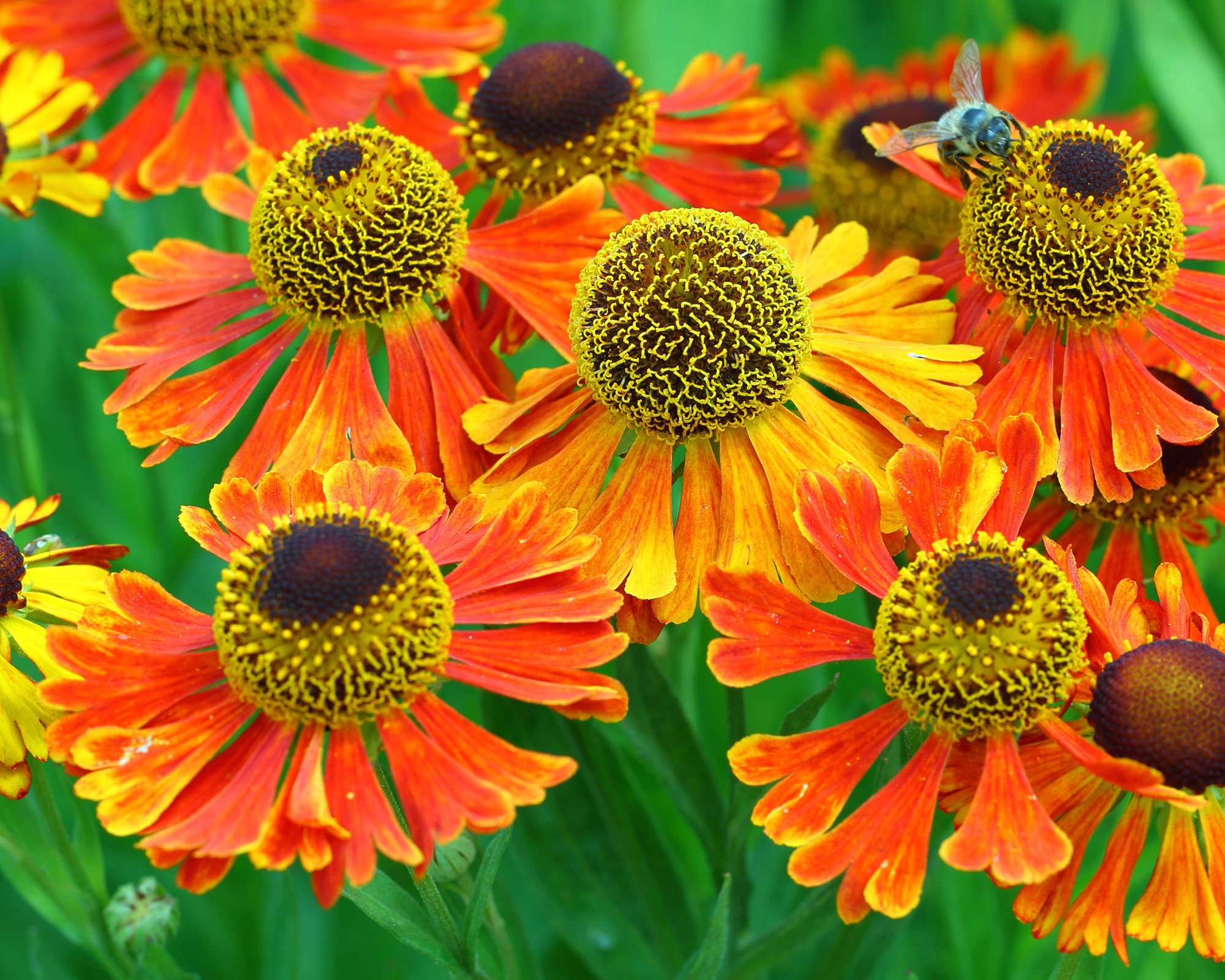
What plants grow best in wet soil?
The hippos of the plant world are those that thrive in year-round wet conditions. They include bog plants such as the colourful feather-duster flowers of Astilbe; Asiatic primulas (such as P. pulverulenta and P. beesiana), which bloom in candy-shop colors; and the tall flaming candles of Ligularia.
Lysichiton x hortensis has impressive ivory and green spathes in spring and, unlike its parent L. americanus, is not invasive. And architectural drama is provided by the leaves of Rodgersia and Gunnera.
These bog plants like being beside water, but not in it (in contrast to the best pond plants), and they love soggy ground, but not waterlogging.
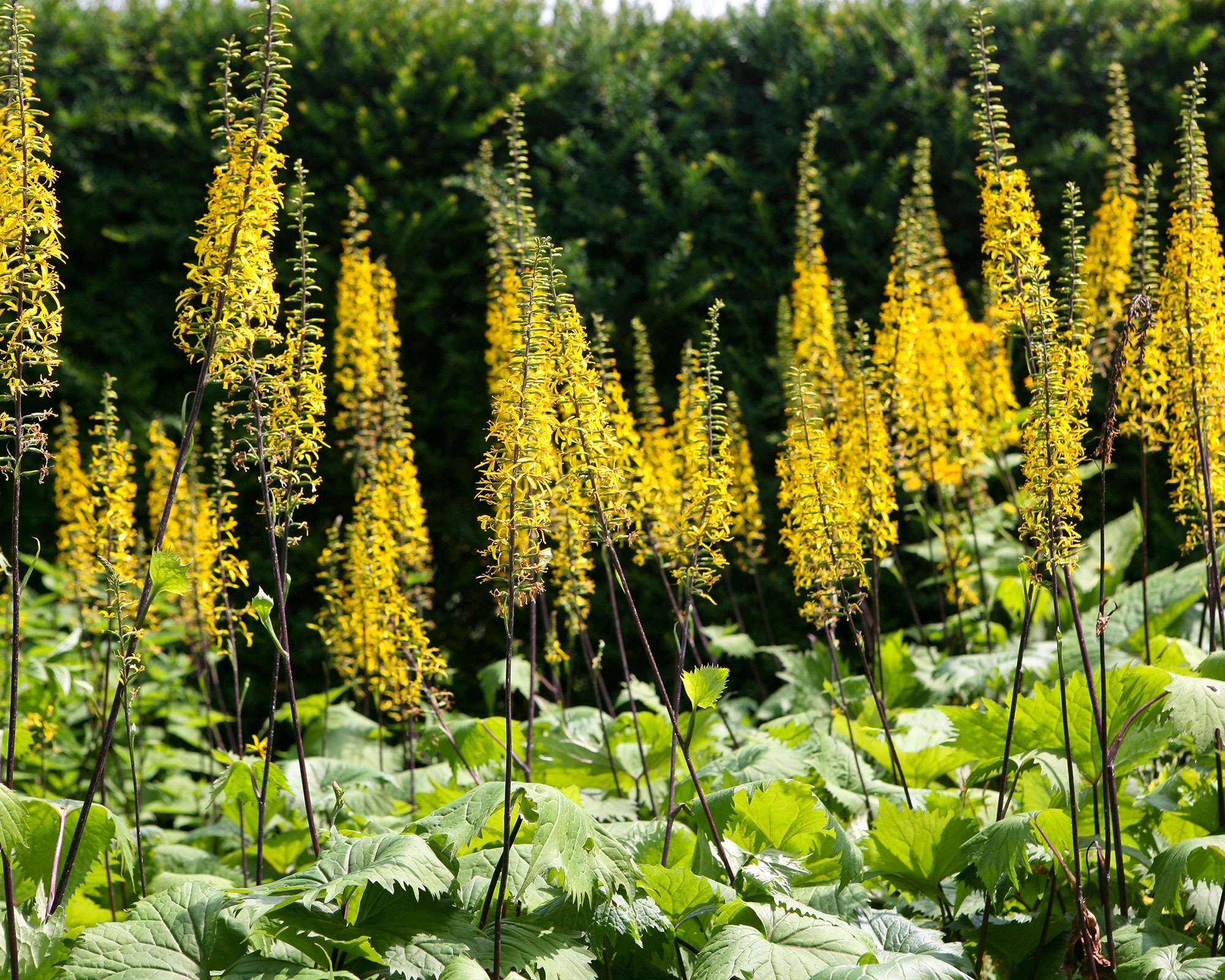

Ruth is the gardening editor of Amateur Gardening magazine and spends her working days carrying out, writing about and photographing the tasks the readers should be carrying out each week, as well as testing many of the new products that arrive on the gardening market. She is horticulturally trained, with a qualification from the Royal Horticultural Society.
